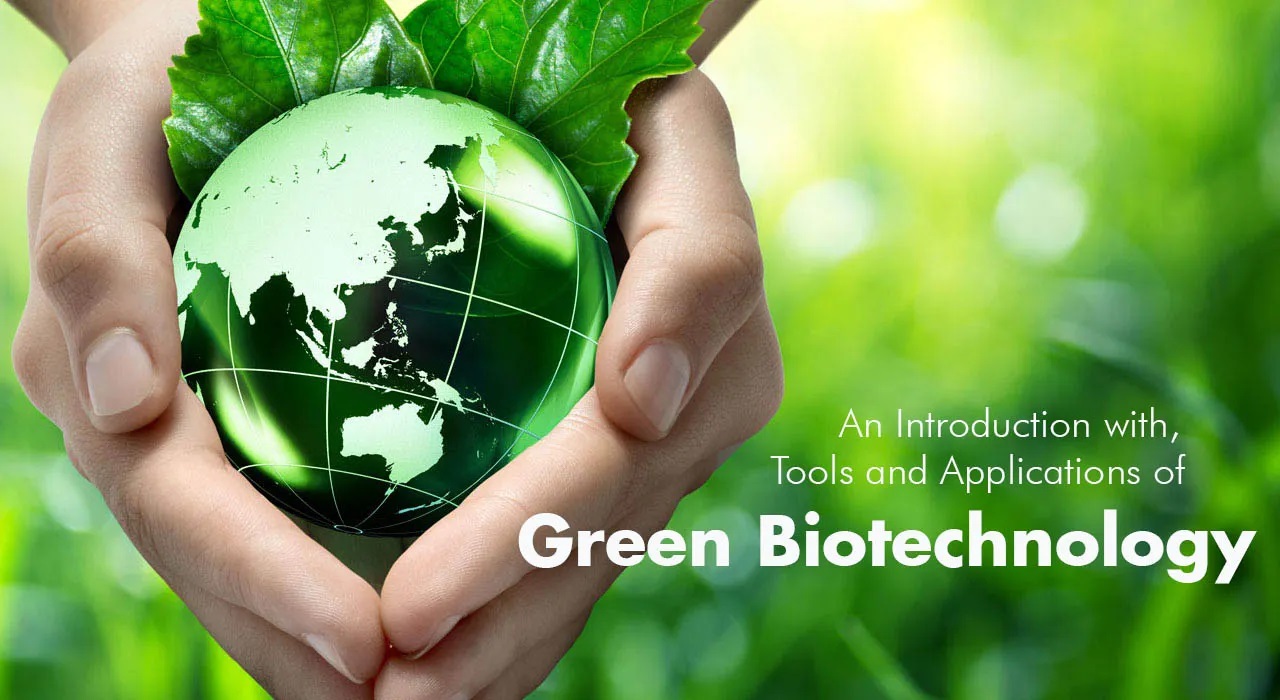Green biotechnology related to plants of improving both the quality and quantity of plants. The main goal of green biotechnology is the production of an improved variety of plants, with the help of biotechnology-based techniques that should be environmentally friendly solutions.
The main aim of green biotechnology is to tackle food security issues and reduce the environmental footprint of the industry. Green biotechnology can improve the global food situation.
17 Most Important Applications Of Green Biotechnology :
1. Micropropagation
One of the most important applications of green biotechnology is the micropropagation of plant species. this technique has attained the status of a large plant-based industry. Micropropagation is the true type of propagation of selected genotypes using small pieces of tissues which can stay as an important technique for rapid production of many commercially important plants like fruit trees and medicinal plants.
2. Production of virus-free plants
Most of the crop plants especially those propagated by vegetative means are systematically infected with one or more pathogens which affect the yield, and quality, and vigor of the plant. Therefore eradication of these pathogens is highly desirable to optimize the yield, and also to facilitate the international exchange of the germplasm. Eradication of virus has been an outstanding contribution of tissue culture technology which involves culturing of meristem tips.
3. Production of Haploid Plants
Haploid plants are unique genetic materials since they permit the expression of recessive genes, and doubling of a desirable haploid can from homozygous diploid in a single generation. These fertile homozygous plants can be used for producing the inbred lines required for hybridization programs.
4. Protoplast culture and somatic hybridization
One of the most significant developments in the field of plant tissue culture has been the isolation, culture, and fusion of protoplasts. This technique has far-reaching implications in plant improvement by cell modification and somatic hybridization.
5. Embryo Rescue in sexual hybrids
The major application of embryo culture has been the rescuing of zygotic embryos formed as a result of interspecific and intergeneric crosses thereby raising rare hybrids. In many interspecific and intergeneric crosses, fertilization does occur normally and the embryo shows early development but embryos abort thereafter because of many factors. One of the important factors is the failure of the endosperm to develop properly which causes premature death of the hybrid embryos.
6. Production of synthetic and artificial seeds
Synthetic seeds offer a potential technology towards the use of somatic embryogenesis for large scale propagation of plants through automation. Somatic embryos are extremely suitable materials for large-scale propagation as a large number of somatic embryos of the same age can be produced in a bioreactor. An artificial seed is therefore analogous to true seeds in which a somatic embryo is encapsulated with a coating material, which protects the embryos against desiccation and mechanical injury.
7. Production of secondary metabolites
Production of diverse secondary metabolites like anthocyanins, alkaloids, carotenoids, tannins, flavones, steroidal, etc from plant cell and tissue culture is yet to achieve at industrial level status.
8. Production of transgenic plants for varietal improvement
With the use of biotechnology-based techniques, we can develop genetically modified crops. Transgenic plants are aimed at improving the productivity and efficiency of crop plants. This technique also improves the nutritional value of the storage of protein by protein engineering. Transgenic plants are possible to target crop plant improvement.
9. Biofertilizers
Biofertilizers are microorganisms based fertilizers that are eco-friendly by nature. Biofertilizers enhance the availability of nutrients like Nitrogen (N), and Phosphorus(P). They are low in cost and they do not pollute the environment. They promote plant growth and protect plants from soil pathogens.
10. Transgenesis
Transgenesis is a process that involves the insertion of required DNA into other organism's DNA for introducing new genes into the original organisms. Transgenesis helps to create a new variety of plants with desired traits.
11.Biopesticide
Biopesticides are biological agents that are used to control weeds, insects, and pathogens. The use of biopesticides is helping to reduce the applications of chemicals for the control of the disease in plants.
12.Improve nutritional content
Under green biotechnology, techniques have been used to improve the nutritional value of crops. With help of these techniques, we can produce crops with a higher concentration of vitamins.
13. Mutagenesis
Mutagenesis is a process under which mutation occurs in the DNA. In agricultural biotechnology, the mutagenesis process helps to induce random mutation to create variety within crops with required traits.
14. Genetic engineering
Genetic manipulation carried out in plants for the production of transgenic plants is to improve the crops, with the desired traits. With the help of genetic engineering, we can introduce resistance to biotic stresses, resistance to abiotic stresses, improvement in crop yield, improved nutritional value, etc all are varieties can be introduced in required plants.
15.Genome Editing
Genome editing help to generate and modify the DNA directly within the cell. This type of technology helps to develop herbicide-resistant varieties in crops.
16. Chloroplast engineering
Chloroplast engineering is an important and exciting field in biotechnology. Due to this technique, a high level of transgene expression is possible in the plant cells. The multigene transfer can be conveniently carried out by this technique.
17. Germplasm conservation
Germplasm is the hereditary material that is transmitted to the offspring through germ cells. It helps breeders to develop various crops. So, conservation of germplasm assumes significance in all breeding programs. The main objective of germplasm conservation is to preserve plant or genetic stock for its use at any time in the future.
Conclusion
The above discussion proves that Green biotechnology is very important for the improvement of plant health. It is required to enhance both the quality and quantity factors related to plants. As a result, all of this ultimately beneficial to our natural health too.



Add New Comment